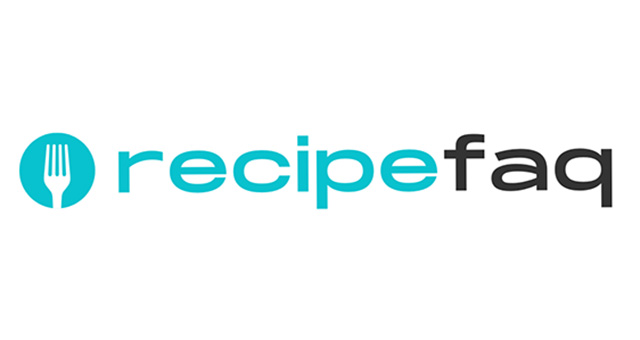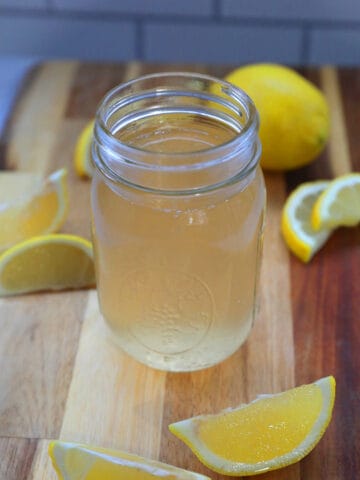Salty, tangy, and packed with umami flavor, yakisoba is a classic Japanese noodle dish that is simple to make and super tasty. But what if you’re on a gluten-free diet? Is yakisoba gluten free? Let’s find out.

Yakisoba is an easy-to-make and versatile dish. And it works well with a variety of vegetables and proteins. Popular versions include chicken yakisoba, beef, and tofu.
But what if you have Celiac disease or a gluten sensitivity? Are yakisoba noodles gluten free or should you steer clear?
Jump to:
What is yakisoba?

Yakisoba is a popular Japanese dish made with stir-fried noodles. The term “yaki” means fried (or grilled) and “soba” is a reference to the noodles.
But despite the name, yakisoba isn’t made with soba noodles. Whereas soba noodles are made from buckwheat flour, those in yakisoba actually use wheat flour.
The chewy noodles can be tossed with various vegetables and meats, and are seasoned with a sweet and savory sauce.
Are yakisoba noodles gluten free?
The short answer is no, yakisoba noodles are not gluten free. They’re made with wheat flour, and wheat contains gluten. Plus, Yakisoba is often flavored with Worcestershire sauce and soy sauce – both of which also can contain gluten.
But there are yakisoba alternatives if you’re on a gluten-free diet. Read on to discover gluten-free yakisoba alternatives that are just as delicious.
Gluten-free yakisoba noodle options
Quite a few gluten-free options exist when it comes to yakisoba noodle alternatives. Here are some of the most common types of noodles you can substitute.
Soba noodles

One of the easiest gluten-free substitutions for traditional yakisoba noodles is soba noodles. They taste similar to yakisoba noodles with a similar texture, and in some cases, they can have the same light color (traditionally, they’re brown to dark brown).
They’re mostly made with buckwheat, which gives them their darker color. Buckwheat alone doesn’t contain gluten, but many soba noodles do use small amounts of wheat flour. So it’s a good idea to check the label to make sure they’re truly gluten free. Some gluten-free soba noodles include:
- Eden buckwheat soba noodles
- King soba buckwheat noodles
- Muso From Japan buckwheat soba noodles
- Big Green buckwheat soba noodles
Thai noodles and other rice noodles
Thai noodles are another great option. Commonly used in pad thai, they’re typically a flat and wide type of noodle. These are made with rice flour so they’re gluten-free, but they have a more pasta-like texture than other rice noodles.
While they have a different texture and may taste a bit different than yakisoba noodles, they’ll typically absorb the flavor of the yakisoba sauce you use.
Besides Thai noodles, other types of rice noodles are another great alternative for yakisoba. They’ll give you a satisfyingly chewy texture without the gluten and they make for a delicious yakisoba.
Shirataki noodles
A less common gluten-free alternative to yakisoba noodles are Shirataki noodles. They’re made from the corm or stem of the konjac plant, a starchy root vegetable. These noodles are translucent and sort of gelatinous, but naturally gluten free.
As a bonus, they’re carb and calorie-free, and they also contain a kind of fiber that can encourage weight loss.
Even though they may be less known than some other noodle types, you can usually still find shirataki noodles at your local grocery store.
Harusame noodles
The starch from potatoes, sweet potatoes, or mung bean is used to make these glass noodles. They’re thin and transparent and resemble cellophane noodles. And they’re gluten-free.
Originally from China, the noodles eventually made their way to Japan and have become a popular ingredient in a variety of noodle dishes, including spring rolls, soups, salads, and stir-fry.
You can usually find harusame at Asian grocery stores.
How to make gluten-free yakisoba noodles
As noted above, the noodles aren’t the only ingredient in yakisoba that contain gluten. Traditional yakisoba sauces can have it as well, as many use Worcestershire sauce and soy sauce, and both of those have gluten.
Fortunately, many gluten-free Worcestershire sauces are now readily available at most grocery stores and online. These include Lea & Perrins and The Wizards Sauces.
Many gluten-free soy sauces are also easy to find. And you can also use coconut aminos, which is free of soy, wheat, and gluten, but closely mimics the umami flavor of soy sauce.
By using these ingredients along with a gluten-free yakisoba noodle alternative, you’ll be able to enjoy a tasty dish of these delicious noodles without the gluten worry.

FAQ
Yakisoba is a dish made with pan-fried noodles. Ramen is a noodle dish with broth or soup.
No, it is not. Soba noodles are made with buckwheat and are usually served chilled with a dipping sauce or in hot soup. Yakisoba uses wheat flour noodles which are stir-fried, typically with vegetables and meat.
Yakisoba is often tossed with a sauce that typically includes a base of Worcestershire sauce, soy sauce, oyster sauce, and ketchup.
No, traditional udon noodles are not gluten free. One of the main ingredients is wheat flour, which contains gluten.
No, these are not gluten-free noodles. Along with eggs, they are typically made with wheat flour, which contains gluten.
More gluten-related food and drink answers
Wondering if some of your other favorite foods and beverages may contain gluten? Check out these posts.






Leave a Reply